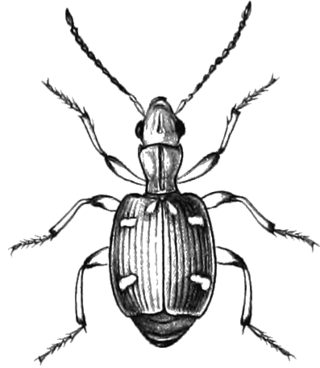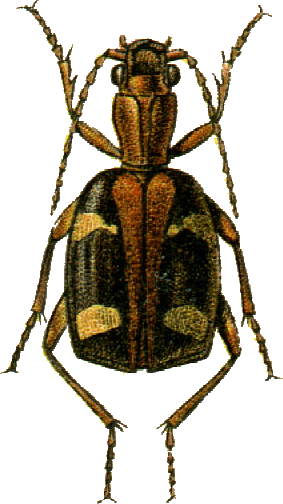
Monogononta is a class of rotifers, found mostly in freshwater but also in soil and marine environments. They include both free-swimming and sessile forms. Monogononts generally have a reduced corona, and each individual has a single gonad, which gives the group its name. Males are generally smaller than females, and are produced only during certain times of the year, with females otherwise reproducing through parthenogenesis.

Vegeta, also referred to as Prince Vegeta or more specifically Vegeta IV is a fictional character in the Dragon Ball franchise created by Akira Toriyama. Vegeta first appears in chapter #204 "Sayonara, Son Goku", published in Weekly Shōnen Jump magazine on November 7, 1988, seeking the wish-granting Dragon Balls to gain immortality.

Ulmus × hollandica 'Vegeta', sometimes known as the Huntingdon Elm, is an old English hybrid cultivar raised at Brampton, near Huntingdon, by nurserymen Wood & Ingram in 1746, allegedly from seed collected at nearby Hinchingbrooke Park. In Augustine Henry's day, in the later 19th century, the elms in Hinchingbrooke Park were U. nitens. Richens, noting that wych elm is rare in Huntingdonshire, normally flowering four to six weeks later than field elm, pointed out that unusually favourable circumstances would have had to coincide to produce such seed: "It is possible that, some time in the eighteenth century, the threefold requirements of synchronous flowering of the two species, a south-west wind", "and a mild spring permitting the ripening of the samaras, were met."

The hybrid cultivar Ulmus × hollandica 'Cicestria', commonly known as the 'Chichester Elm', was cloned at the beginning of the 18th century from a tree growing at Chichester Hall, Rawreth, near Danbury, Essex, England, then the home of Thomas Holt White FRS, brother of the naturalist Gilbert White. The tree was first recorded by country parson and botanist Adam Buddle in south-east Essex in 1711, and appeared as U. cicestria in an 1801 catalogue. 'Cicestria' is the original Ulmus × hollandica 'Vegeta', but suffered confusion with the later Huntingdon Elm cultivar by John Claudius Loudon who, without consulting Lindley, accorded the epithet 'Vegeta' to Huntingdon Elm in 1838, as he found the two indistinguishable. J. E. Little in The Journal of Botany (1923) agreed that Buddle's leaves-specimen of Chichester Elm in the Sloane Herbarium seemed to be the same cultivar as Huntingdon Elm: "If so, this elm [Chichester] was in existence and mature some years before the reputed raising of the Huntingdon Elm by Wood of Huntingdon 'about 1746'."

Mastax is a genus of beetles in the family Carabidae, containing the following 52 species:
Avitomyrmex is an extinct genus of bulldog ants in the subfamily Myrmeciinae which contains three described species. The genus was described in 2006 from Ypresian stage deposits of British Columbia, Canada. Almost all the specimens collected are queens, with an exception of a single fossilised worker. These ants are large, and the eyes are also large and well developed; a sting is present in one species. The behaviour of these ants may have been similar to extant Myrmeciinae ants, such as foraging solitarily for arthropod prey and never leaving pheromone trails to food sources. Avitomyrmex has not been assigned to any tribe, instead generally being regarded as incertae sedis within Myrmeciinae. However, its identity as an ant has been challenged, although it is undoubtedly a hymenopteran insect.
Mastax senegalensis is a species of beetle in the family Carabidae found in Senegal.
Mastax extrema is a species of beetle in the family Carabidae found in Namibia and South Africa.
Mastax hargreavesi is a species of beetle in the family Carabidae found in Ivory Coast and Sierra Leone.

Mastax histrio is a species of beetle in the family Carabidae found in India, Pakistan and Sri Lanka.
Mastax latefasciata is a species of beetle in the family Carabidae found in China and Vietnam.
Mastax nana is a species of beetle in the family Carabidae found in Chad, Mali and Democratic Republic of the Congo.

Mastax ornatella is a species of beetle in the family Carabidae found in Angola, Namibia, South Africa and Zimbabwe.
Mastax parreyssi is a species of beetle in the family Carabidae found in Algeria, Cameroon, Chad, Egypt, Ethiopia, Ivory Coast, Israel and Sudan.
Mastax poecila is a species of beetle in the family Carabidae found in Cambodia, China and Singapore.
Mastax pulchella is a species of beetle in the family Carabidae found in China and India.
Mastax royi is a species of beetle in the family Carabidae that can be found in Ivory Coast and Senegal.
Mastax subornatella is a species of beetle in the family Carabidae found in Angola, Namibia, South Africa and Zambia.
Mastax sudanica is a species of beetle in the family Carabidae found in Chad and Sudan.

Mastax thermarum is a species of beetle in the family Carabidae found in Asia and Europe.






